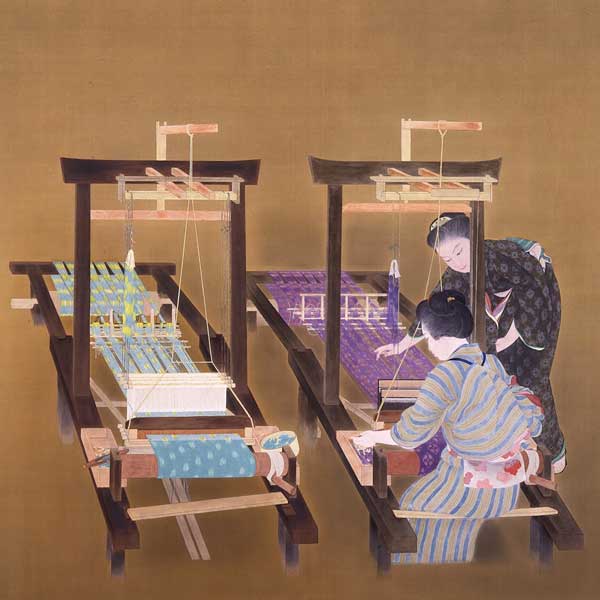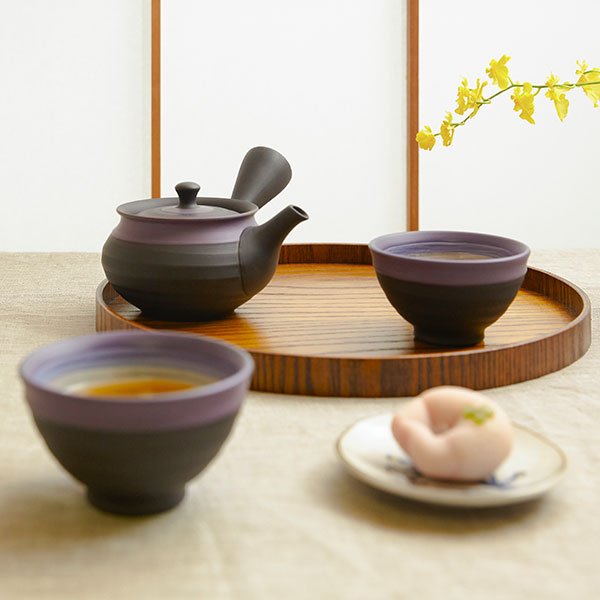Must-See Japanese Paintings for your Tokyo Itinerary
by Alicia Joy | TRAVEL
Yamamoto Shunkyo, Recesses of Shiobara, 1909, National Museum of Modern Art, Tokyo
Japanese painting is one of the oldest art forms in the world. From ancient yamato-e to surreal modern art, discover some of the most fascinating, beautiful and treasured Japanese paintings in the art museums of Tokyo.
Parting Spring, Japanese Scroll by Kawai Gyokudo
Parting Spring by Kawai Gyokudo (Part 1), 1916, National Museum of Modern Art, Tokyo
Kawai Gyokudo’s two-part series depicts a scene of late springtime. A river runs through a gorge surrounded by cherry blossoms, and several leisure boats make their way down the currant. Gyokudo was inspired by the Nagatoro Gorge in Saitama Prefecture, just north of Tokyo. The artist paid special attention to the motion of the water and how to accurately translate it onto his painting. “Parting Spring” is a two-part painting depicted on a pair of folding screens. It was finished in 1916 and designated an Important Cultural Property in 1971. Find this painting at the National Museum of Modern Art in Tokyo.
Parting Spring by Kawai Gyokudo (Part 2), 1916, National Museum of Modern Art, Tokyo
How to Get to the National Museum of Modern Art, Tokyo
Name in Japanese: 東京国立近代美術館 (Tōkyō Kokuritsu Kindai Bijutsukan)
Address: 3-1 Kitanomarukoen, Chiyoda, Tokyo (see on Google Maps)
Open: 10:00am-5:00pm, closed on Mondays. See here for more details.
Transport: Two-minute walk from Takebashi Station on the Tozai Line
The Diary of Murasaki Shikibu
Segment of the Murasaki Shikibu Nikki Emaki, Tokyo National Museum
The Murasaki Shikibu Nikki Emaki is a series of picture scrolls created sometime during the 13th century. The story is believed to be based on the real life diary of Murasaki Shikibu, author of the world’s first novel, The Tale of Genji. It is a classical yamato-e, a Japanese painting style popularized during the Heian Period and inspired by China’s Tang Dynasty art. There are only four scrolls remaining from the original complete work, scattered throughout different museums and private collections. In this segment of the paintings owned by the Tokyo National Museum, courtiers celebrate the 50th day after the birth of the future emperor, Imperial Prince Atsuhira-shinno.
How to Get to the Tokyo National Museum
Name in Japanese: 東京国立博物館 (Tokyo Kokuritsu Hakubutsukan)
Address: 13-9 Uenokoen, Taito, Tokyo (see on Google Maps)
Open: 9:30am-5:00pm, 9:00pm on Fridays and Saturdays, closed on Monday. More details here.
Transport: Inside Ueno Park, a 15-minute walk from Ueno Station on the Ginza, Hibiya and Yamanote lines
Japanese Painting takes a Surreal Stroll in this Artwork by Seiji Togo
© Seiji Togo, Surrealistic Stroll, 1929, Seiji Togo Memorial Sompo Japan Nipponkoa Museum of Art
Seiji Togo is a prominent Japanese painter who was active during the early to mid-1900’s. His interest in Futurism, an art movement that influenced Surrealism and Art Deco, is apparent in this 1929 painting, “Surrealistic Stroll”. Although it’s a departure from his usual style, it’s this iconic painting that became the logo of the Seiji Togo Memorial Museum, also known as the Seiji Togo Memorial Sompo Japan Nipponkoa Museum of Art.
Intrigued? Delighted? Questions? We would love to hear your thoughts in the comments below!
How to Get to the Seiji Togo Memorial Museum
Name in Japanese: 東郷青児記念 損保ジャパン日本興亜美術館 (Togo Seiji Kinen Sompo Japan Nipponkoa Bijutsukan)
Address: 42F, 1-26-1 Nishi-Shinjuku, Shinjuku, Tokyo (see on Google Maps)
Open: 10:00am-6:00pm, closed on Monday's. See here for more details.
Transport: Five-minute walk from Nishi-Shinjuku Station on the Marunouchi line.














TRAVEL | March 15, 2024